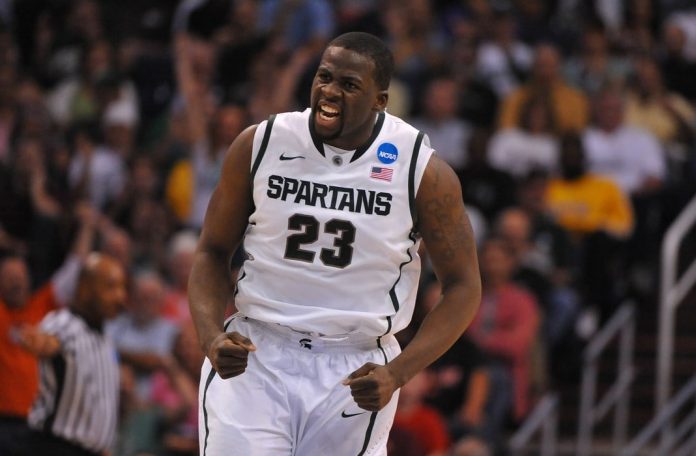In the era of the one-and-done prospect, fewer and fewer NBA players go through all four years of college. However, there are still some players who need those extra years to develop into elite basketball prospects. The list is a lot shorter than many fans may think and will only shrink in the future.
Few players take the traditional four-year route into the league anymore. So who is the best out of those few? In order to make a quality list, we’ll only go five deep. The pool turns rather shallow after the top seven, and I’m sure nobody wants to see any rankings list feature Mason Plumlee.
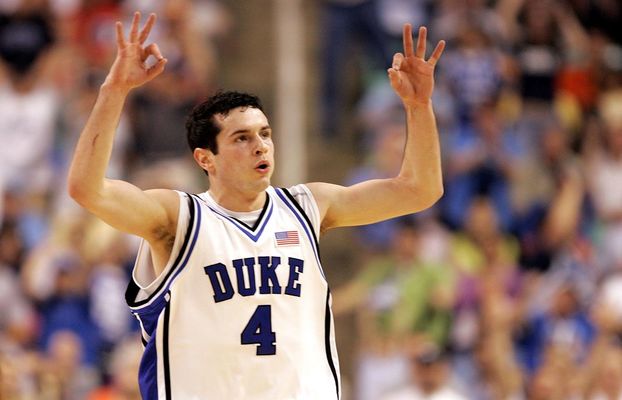
5. JJ Redick
Redick defined college basketball in the early 2000’s. Undersized and relatively unathletic, his sweet shooting carried him all the way to the NBA. 19.9 PPG on 40.6% three-point shooting is no joke, and his battle for the player of the year with Adam Morrison was legendary. Although he never won an NCAA title, Redick finished his collegiate career with records in both ACC career points and ACC career tournament points. He won nearly all major player of the year awards and was the face of Duke basketball all four seasons.
His NBA career may not have been as glamorous as his college, but Redick still carved out a successful professional career. A career average of 41.7% from three will keep any player alive in the league. 11 years in the NBA is no joke, and Redick’s still going strong.
Best known for the four years Redick spent roaming the perimeter with Chris Paul in Los Angeles, Redick just put up a career-high 17.4 PPG at age 33 for Philadelphia. He’ll never reach the levels of dominance he had at Duke, but those four years groomed him for the NBA as well as anything. Shooting will always have value in the league, so don’t count on seeing him go anytime soon.
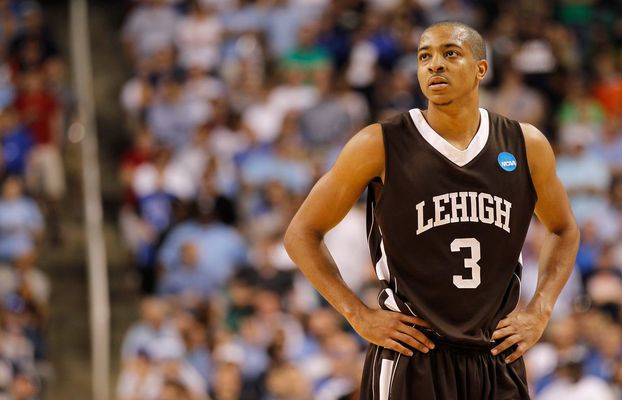
4. C.J. McCollum
Another sniper in college, McCollum attended tiny Lehigh where he led them to a 2010 NCAA tournament appearance. He won conference player of the year as a freshman, and the rest of his college career was just as decorated. In total, McCollum averaged 21.3 PPG, 6.3 REB, and 2.7 AST on 37.7% shooting. An injury ended his senior season, but his body of work was enough to convince the Portland Trailblazers to take him 10th overall in the 2013 NBA Draft.
After starting off his NBA career slow, McCollum finally broke out in 2015-16. He’s an ironman, playing above 80 games a year for the past three seasons, averaging 21.7 PPG in that span along with 3.8 assists on 41.2% from three. McCollum’s always been a shooter and has one of the most underrated handles in the league.
McCollum’s never been great on defense, but there are few holes in his offensive game. He developed an exceptional jumper during his four years at Lehigh that transferred smoothly in the NBA from the get-go. McCollum may never become a superstar, but no doubt any team would be glad to have his services.
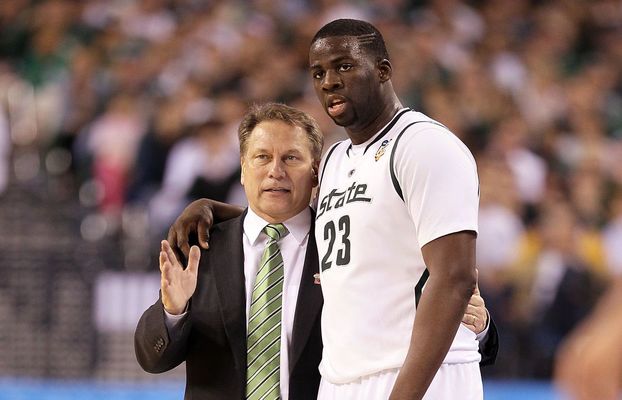
3. Draymond Green
Draymond Green may be the hardest player in the NBA to evaluate. It’s been that way since his college days with the Michigan State Spartans, all due to his unique game. Just like in the NBA, Green wasn’t a star his first few years as a Spartan. He needed three years before developing into a star his senior year. He won Big Ten Player of the Year, averaging 16.2 PPG, 10.6 REB, 3.8 AST, 1.5 STL, and .9 BLK.
Despite all that, Green was still only the 35th pick in the 2012 Draft. Questions about his size, at 6″7′ and 230 lbs, and shooting stroke held back his stock. Most NBA teams didn’t think he had the quickness or skill to play small forward or the size to play power forward, a classic “tweener.” Obviously, Green proved them all wrong. He played major minutes in the postseason as a rookie and even started a game. Coach Mark Jackson even trusted him enough to guard Andre Miller in the game-deciding play in Game 1 of the first round.
The rest of Green’s career is highly publicized. He’s an All-Star and Defensive Player of the Year and has two All-NBA selections to his name. Green might be the best defender in the NBA, and few players can match his versatility. His playstyle hasn’t changed much since his college days, but there’s no doubt he’s improved in every aspect of the game.
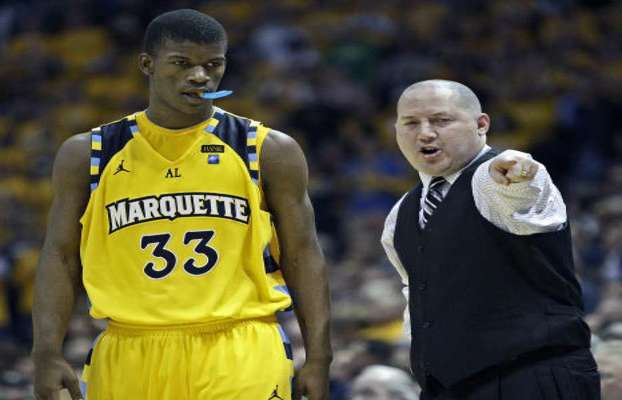
2. Jimmy Butler
This one was tough. Butler’s one of my favorite players, and it pains me to put him at number two. He’s always been a gritty player, dating all the way back to his time at Marquette. Butler came out as a raw prospect with a broken jump shot and an insatiable thirst to get better. He was never expected to become anything great, and even attended junior college for a year before transferring to Marquette. From being kicked out of his home as at eight years old, to sleeping in the team room, Butler’s story is one of the most inspirational in sports.
Butler didn’t have the greatest college career. He was drafted 30th for potential, not polish. He didn’t win any awards and everything from his shaved head to his skinny body hinted at unremarkable. He’s unique in that, despite always being a top defender in every level, he has a wingspan barely longer than his height at 6″8′.
The Bulls lucked out on Butler’s tireless work ethic. He went from 2.6 PPG as a rookie to 22.2 PPG in 2018, plus 5.3 AST, and 4.9 REB.
Butler being second on this list is no knock to him as a player. The distance between him and first is extremely close. Health concerns drop him back. He’s only played 70 games once in the last five seasons. Jimmy Butler’s a borderline top-10 player in the league and earns his spot at second on this list.
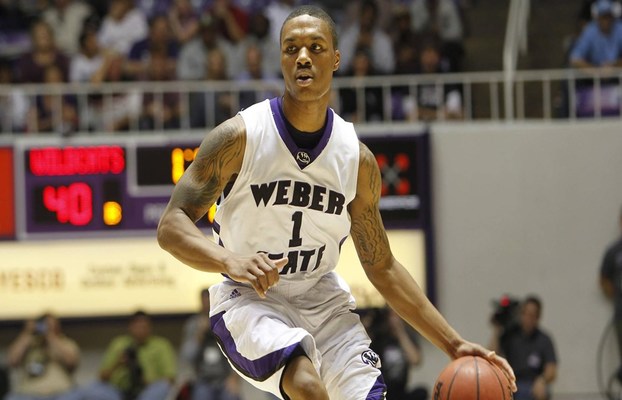
1. Damian Lillard
The 2018 playoffs were brutal to Damian Lillard. The Pelicans hounded him all the way, scarcely giving him room to breathe. Yet, his regular season should show he’s still a top player in the league. Lillard was fourth in MVP voting, as he averaged 26.9 PPG, 6.6 AST, 4.5 REB, and slashed 43.9/36.1/91.6.
Back at tiny Weber State, Lillard averaged 24.5 PPG, 4.0 AST, and 5.0 REB in his senior season. It was good enough to get him selected sixth overall by Portland in 2012, a gamble considering the weaker competition Lillard went up against. From there he won Rookie of the Year and hit a Game 7 game-winning buzzer-beater in the playoffs, breaking every Rockets fans’ heart.
Some may wonder why I ranked Lillard over Butler, and I have two main reasons. The first is that I’ve seen Lillard lead a team that lost four of its starters in one offseason, to the second round of the playoffs the next year. And, although he was absolutely smothered by New Orleans in the first round last season, don’t forget the Blazers were the three seed. His teams have consistently made the playoffs and overachieved each year, while I can’t say the same for Jimmy Butler.
The second reason isn’t quite so concrete, but it’s worth noting. Butler always seems to have some sort of rumor surrounding his team. We’ve heard three separate stories about the Timberwolves this summer, none of them good. During his time in Chicago, Butler had teammates calling him out on social media (Rajon Rondo’s deleted IG post). Even before that, there was always that awkward rivalry between him and Derrick Rose. This doesn’t mean Butler’s a bad teammate, just that there should be reason for concern.
Lillard’s one of the most successful small school success stories of all-time. He didn’t get much attention until his senior year, and even after that, he had more than his fair share of doubters. He’s living evidence that you don’t need to go to Kentucky or Duke to make it to the big leagues.

